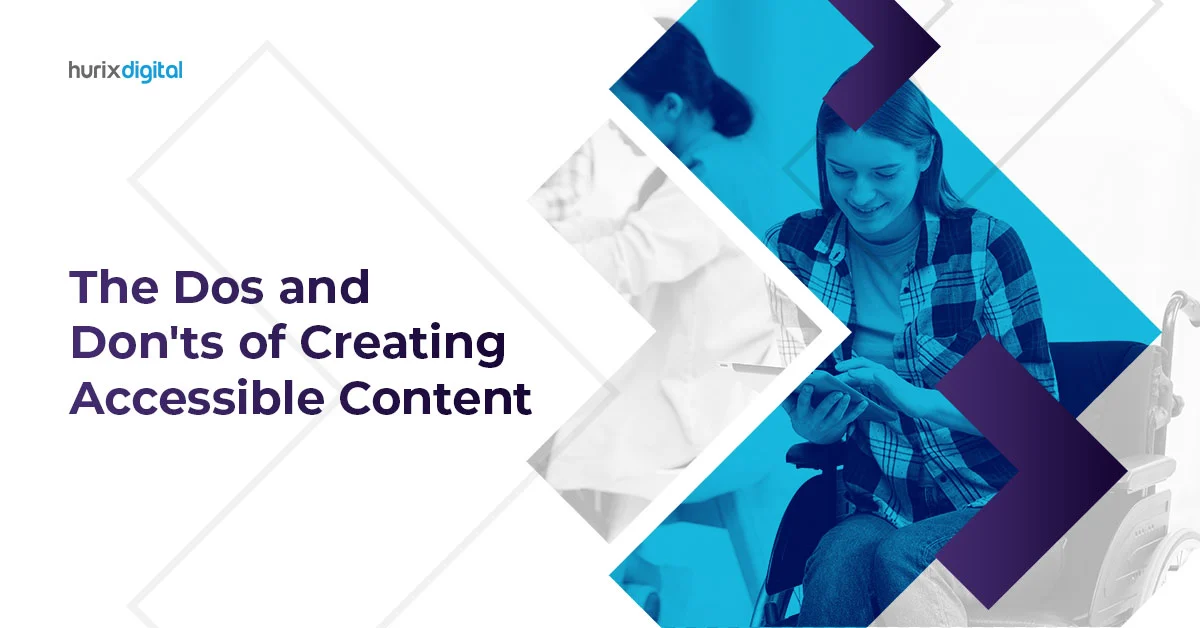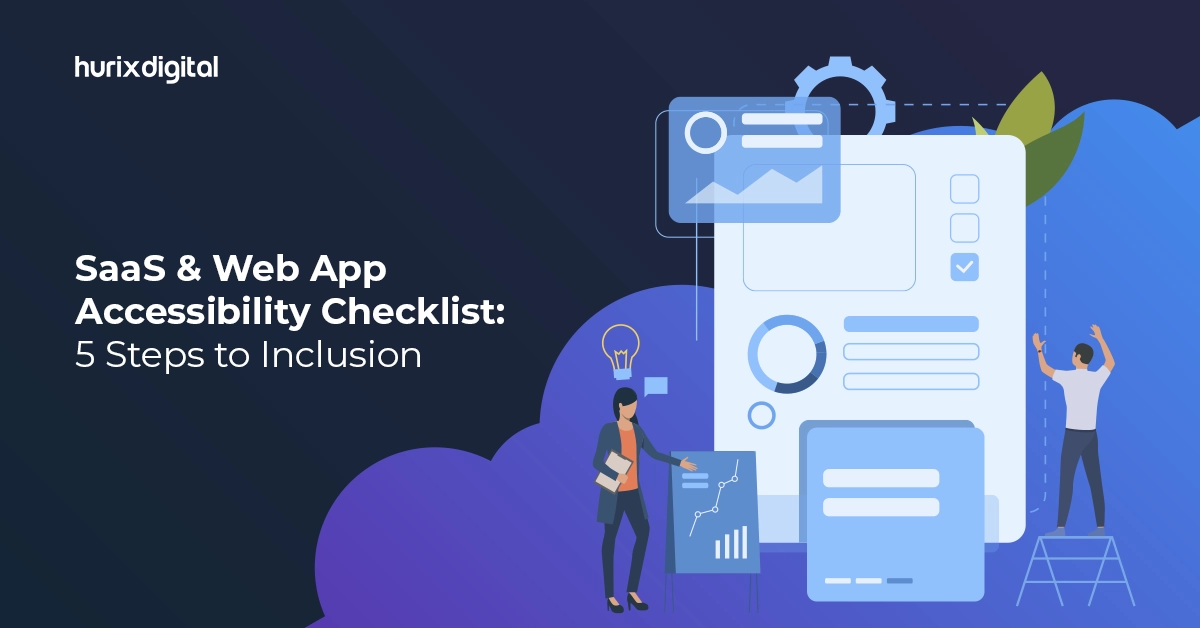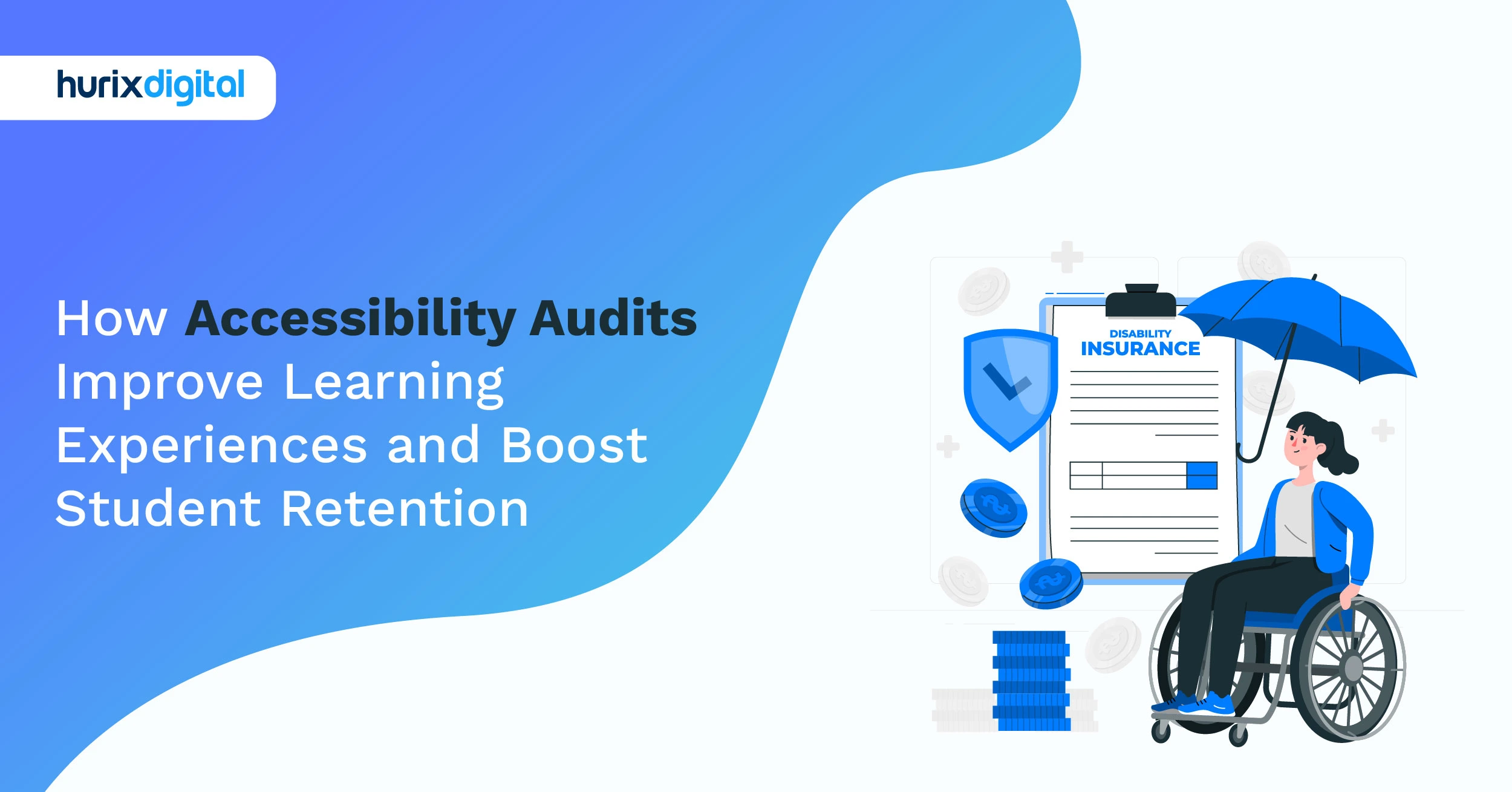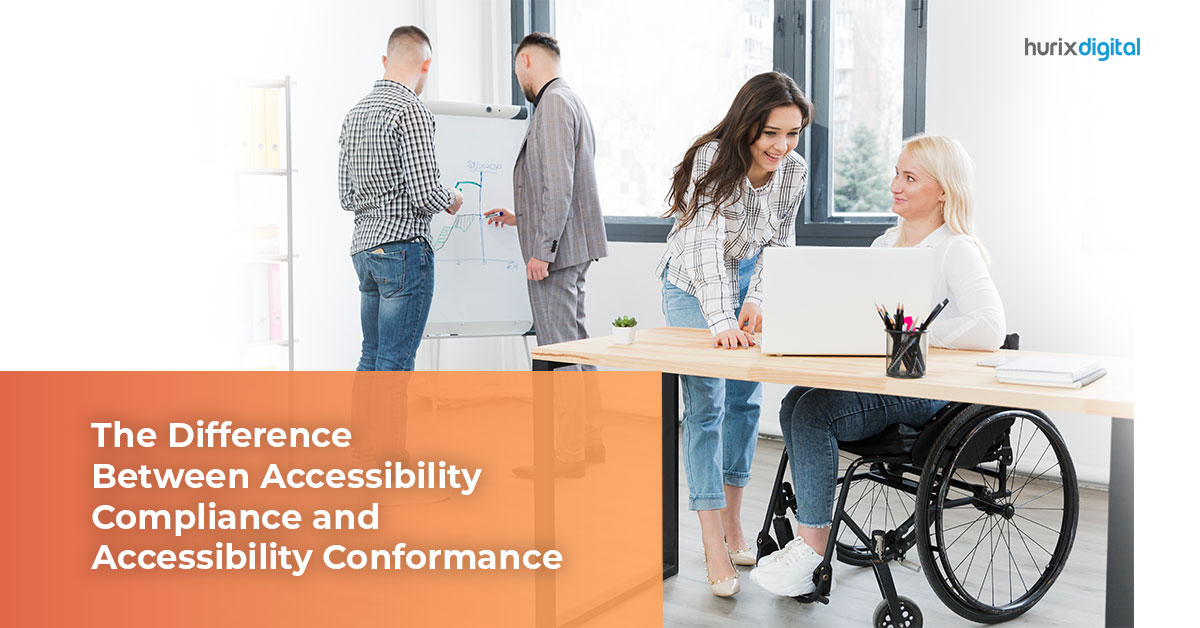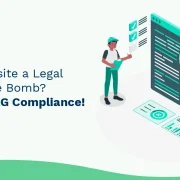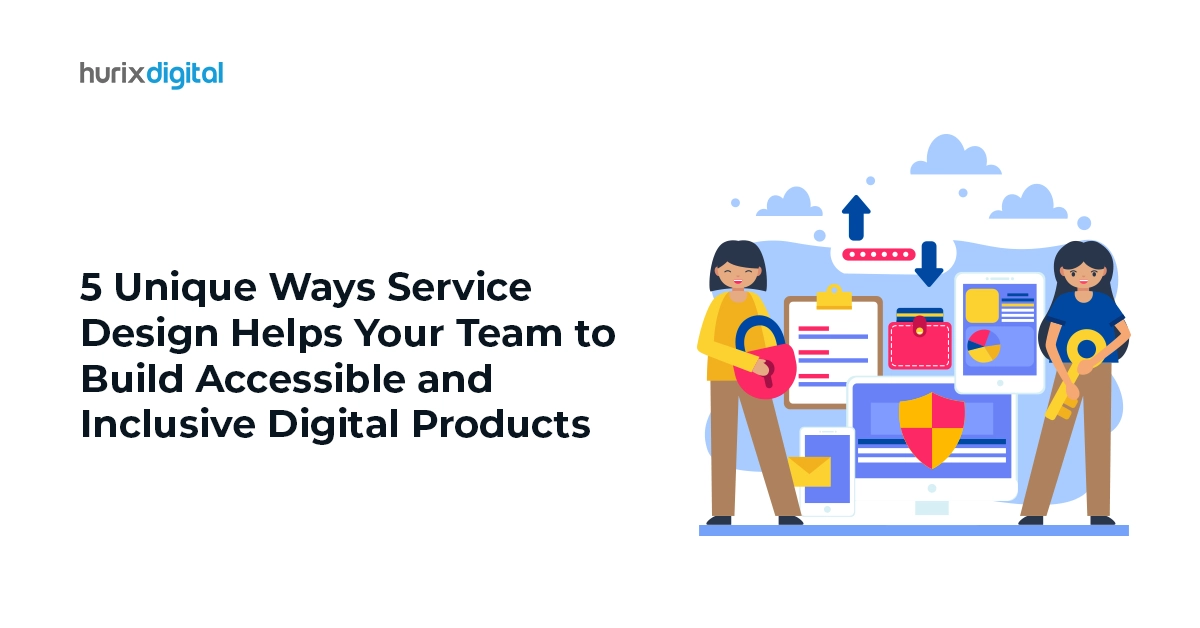
5 Unique Ways Service Design Helps Your Team to Build Accessible and Inclusive Digital Products
Summary
Harness service design to incorporate accessibility and inclusivity in your digital products. Empower your team to craft user experiences for diverse audiences with this transformative approach.
The digital landscape is constantly evolving, and the significance of diversity and inclusion is undeniable.
By 2030, WHO estimates that over 2 billion people will rely on assistive technologies like screen readers to interact with digital products. This shift towards accessibility highlights the importance of integrating inclusive design practices into the development process.
Accessibility focuses on removing barriers that prevent people with disabilities from using digital products. It includes aspects like vision, hearing, motor skills, speech, and cognition. International guidelines like those from the World Wide Web Consortium (W3C) provide accessibility best practices to create features that minimize these barriers. Digital inclusion takes accessibility a step further.
It considers the entire spectrum of user identities, including age, culture, socioeconomic background, and more. The goal is to design products that meet business needs while catering to the diverse user range interacting with them.
Keep reading as we explore how service design can support your team in building accessible and inclusive digital products.
Table of Contents:
Understanding Service Design
Service design goes beyond the surface to create seamless user experiences. It considers the entire service ecosystem, encompassing the visible “frontstage” interactions and the invisible “backstage” processes that make them possible.
1. Balancing User Needs and Business Goals
As Gibbons (2017) states, service design involves strategically planning and organizing a business’s resources—people, processes, and tools—to improve the employee experience (backstage), translating into a superior customer experience (frontstage). Service design ensures smooth and efficient service delivery by optimizing backstage operations.
2. User-Centered Design for Optimal Solutions
Before developing a digital service, service design methodology emphasizes user-centered research. The research delves into the core user needs and challenges, questioning existing processes to identify areas for improvement.
Unlike traditional development approaches, service design focuses on the holistic user experience, integrating various touchpoints within the service journey. This approach ensures that the technical functionality is sound, with user needs prioritized throughout, leading to innovative and user-friendly solutions.
3. Designing for a Complex Ecosystem
Service design recognizes that users interact with brands within a broader network of interconnected experiences. For instance, a car may be a product, but from a service design perspective, it becomes a tool for an elderly user needing an Uber ride to visit a friend. This scenario requires considering various factors, including:
- The user’s comfort level with technology, potentially using a smartphone for the first time.
- Any physical limitations that might require informing the driver of specific needs.
- The driver, who is also a user of the Uber service, but experiencing it from a different perspective.
Understanding these interrelationships between service providers and users within their broader contexts allows service designers to craft solutions that cater to individual user ecosystems. It ensures a positive user experience while enabling brands to deliver their promises efficiently and sustainably.
4. A Holistic Approach
Service design encompasses a broad scope, integrating aspects of user experience (UX) design and customer experience (CX) design. It requires designers to consider both the macro- and micro-factors that shape the user’s reality, ensuring an exceptional experience for everyone involved.
Also Read: Best Practices of Web Accessibility for Developers and Designers
Building Inclusive and Accessible Experiences
Service design empowers your team to create experiences that are human-centered but also inclusive and accessible for all.
Here is how:
1. Accessibility as a Core Value: The Moral Imperative
Service design starts with a sound understanding of your brand’s core purpose and the needs it aims to fulfill. These accessibility solutions consider the requirements of a diverse user base. By integrating accessibility into the very goal of your project, service design elevates it from a secondary consideration to a fundamental principle.
Embedding accessibility within the objectives catalyzes action and fosters a culture of ethical design that prioritizes inclusivity from the outset. It sparks essential conversations about how to translate accessibility principles into concrete solutions.
This collaborative dialogue promotes a deeper understanding of accessibility needs and empowers teams to identify and implement practical solutions. Viewing accessibility as a core value and actively discussing its implementation creates a project environment that prioritizes inclusivity and empowers all users to engage meaningfully with your product or service.
2. Facilitating Accessibility Through Knowledge Sharing
Integrating accessibility in digital products and services requires readily available knowledge for all stakeholders. Consider establishing a comprehensive accessibility knowledge hub to bridge this gap. This centralized repository should house a diverse range of accessible resources, including:
- Links to Accessibility Guidelines: Provide easy access to official accessibility standards established by organizations like the World Wide Web Consortium (W3C).
- Informative Presentations: Incorporate clear yet engaging presentations that explain accessibility best practices and relevant case studies.
- Demonstrative Videos: Utilize video tutorials to visually showcase how to implement accessibility features across different design and development tools.
To complement the resource library, consider bringing an accessibility expert on board. Their experience allows effective dissemination of knowledge to designers, developers, and testers. It can take the form of workshops, Q&A sessions, or ongoing consultations, ensuring digital accessibility is seamlessly integrated throughout the project lifecycle.
3. Factoring in Accessibility Efforts During Project Scoping
Accessibility considerations should not be viewed as an afterthought but rather as an integral part of the planning process.
Examples like color contrast and clear text definitions, while requiring additional design effort, offer significant benefits by expanding your user base. It is critical to factor them into project planning from the very beginning to ensure seamless integration of accessibility features.
It involves including accessibility considerations across all phases: design, development, and testing. Quantify the specific accessibility requirements for your project. Accessibility solutions allow for more accurate effort estimations within the design, development, and testing phases, facilitating a smoother project flow.
Acknowledging the potential need for iterative updates enables you to integrate accessibility enhancements throughout the development cycle. This incremental approach allows for step-by-step application improvements, guaranteeing that color contrast and text legibility meet accessibility standards.
4. Weaving Accessibility into the Design Fabric
Integrating digital accessibility considerations directly into design definitions is a critical step toward creating inclusive user experiences. It involves systematically incorporating accessibility details into the design system, one component at a time.
Begin by focusing on the most frequently used components, gradually adding accessibility details to less common ones. An iterative approach ensures consistent progress while minimizing disruption to existing design elements.
Low-contrast text plagues 86.4% of home pages, violating WCAG 2 AA accessibility guidelines. This issue, failing to meet WCAG 2 AA accessibility standards, is the most prevalent accessibility barrier encountered. For each component, include accessibility details, such as:
- Color Codes: Define accessible color contrasts that meet relevant standards.
- Screen Reader Definitions: Provide clear and concise labels for screen readers, ensuring users with visual impairments can effectively navigate the interface.
- Resizing Behaviors: Specify how components should respond to user-defined resizing or zooming, ensuring optimal functionality across different screen sizes and devices.
- Dark Mode Appearances: Define how components should adapt to dark mode themes, providing a comfortable and visually consistent experience for users who prefer dark interfaces.
5. Building Accessibility into Development Workflows
Digital accessibility should be an intrinsic part of development, not an afterthought. This is how:
- Prioritize Accessibility in Acceptance Criteria: By incorporating accessibility requirements directly into the acceptance criteria for every development task, teams establish clear expectations and elevate the importance of implementing accessible features.
- Consider Platform-Specific Accessibility: For each development task, consider the unique accessibility guidelines and technical features associated with the target platform. A meticulous approach ensures compatibility and adherence to accessibility standards across diverse platforms.
6. Rigorous Testing and Feedback Loop
Digital accessibility testing goes beyond standard functionality checks. New product aspects must be rigorously evaluated to ensure compatibility with screen readers, keyboard navigation, and other assistive technologies.
Treating accessibility bugs with the same priority as functional issues is paramount. Continuous user and client feedback is instrumental in refining accessibility in digital products.
Actively engaging with stakeholders throughout the development process provides invaluable insights into user needs and areas for improvement. This approach allows for incremental product enhancements based on real-world feedback.
User testing sessions, surveys, interviews, and ongoing communication channels establish a vital feedback loop. This user-centric approach empowers teams with the knowledge to make informed decisions, prioritize features, and deliver products that delight users.
Also Read: How to Create an Accessible Brand in 2024 and Beyond?
Final Words
An accessible service design approach surpasses inclusion and nurtures a robust team and a superior product by its very nature.
The resulting product is not just more stable and well-considered; it offers an enhanced user experience for everyone in every situation.
Embracing accessibility themes and human-centered design and integrating them into our daily work is a progressive journey leading to an accessible digital world for all. Shedding inhibitions and actively incorporating accessibility best practices collectively pave the way for a universally enriching digital landscape.
The expert team at Hurix Digital ensures your content adheres to WCAG guidelines and is accessible to users with diverse needs. Our experts identify and rectify accessibility barriers within your existing digital products.
Connect with us to gain ongoing support and guidance now!

Vice President – Content Transformation at HurixDigital, based in Chennai. With nearly 20 years in digital content, he leads large-scale transformation and accessibility initiatives. A frequent presenter (e.g., London Book Fair 2025), Gokulnath drives AI-powered publishing solutions and inclusive content strategies for global clients

